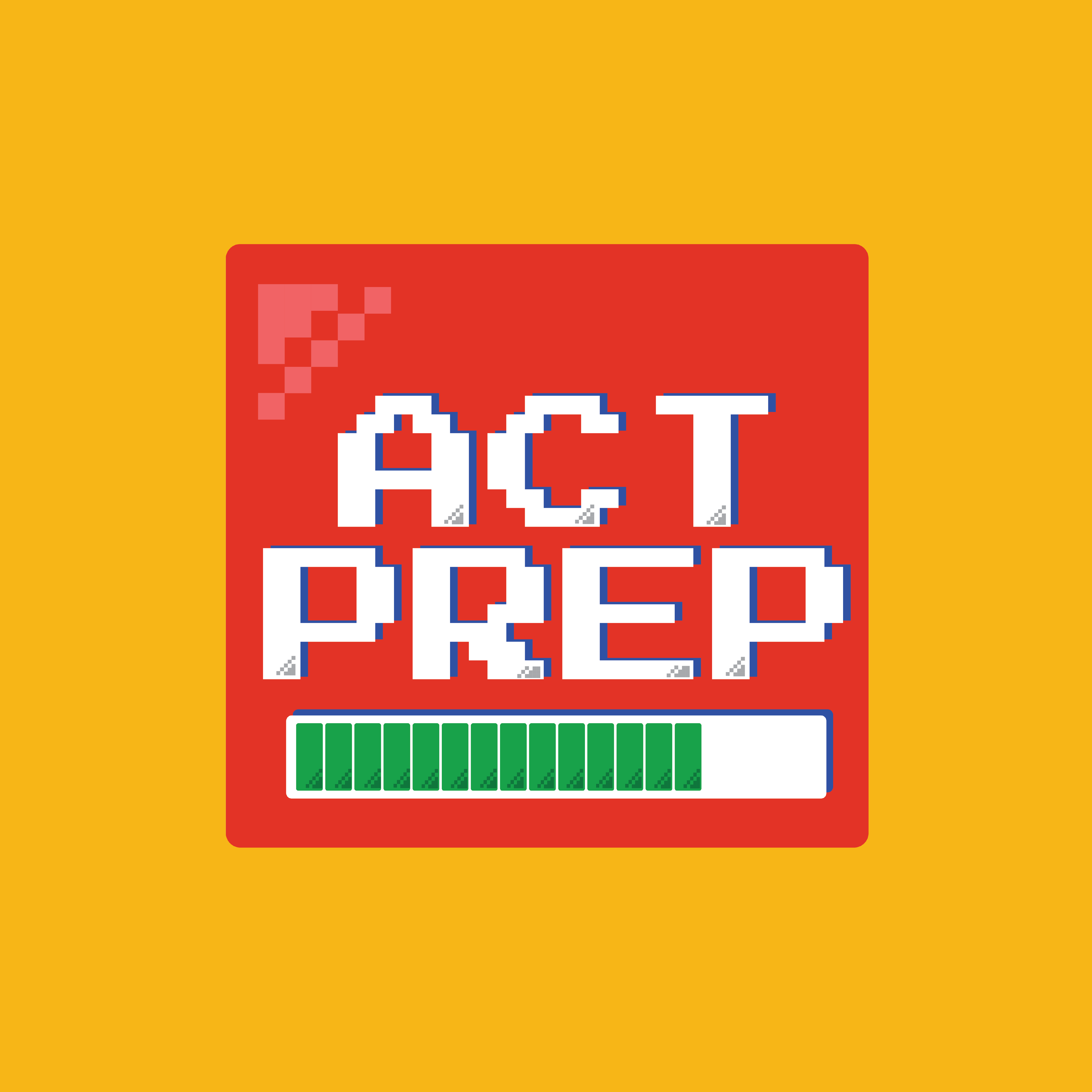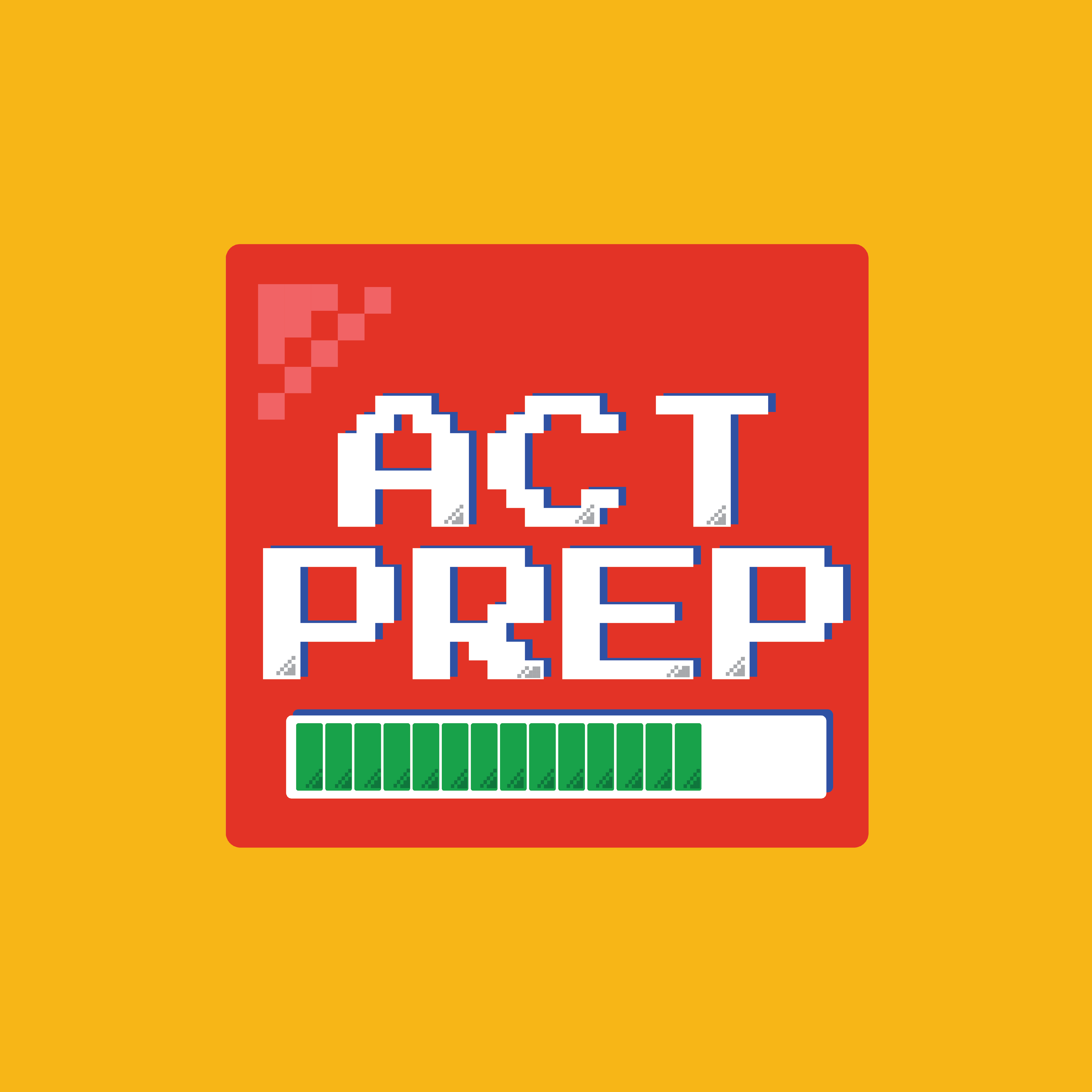Summary
In this culminating reading ACT prep activity, students use the skills they have learned during the ACT prep series. Students practice responding to an ACT-style reading passage and question set then reflect on how well they expect to do on the real ACT. This is the tenth activity in a 10-week "Power Up" series for ACT prep.
Essential Question
How can I increase my ACT score?
Learning Objectives
Select test-taking strategies to use on the ACT reading section.
Apply ACT reading test knowledge.
Materials List
Activity Slides (attached)
Passage handout (attached; one per student)
Questions handout (attached; one per student)
Questions (Teacher Guide) document (attached; for teacher use)
Introduction
10 Minute(s)
Introduce the activity using the attached Activity Slides. Share the essential question on slide 3 and the learning objectives on slide 4.
Have students take out a piece of notebook paper and move to slide 5. Introduce the Justified True or False strategy to students. Provide time for students to read the four statements on the slide and decide whether each is true or false. Have students write down their answers on their notebook paper with their explanation for choosing true or false. Ask for volunteers to share their justified conclusions with the class. Use the hidden slide 6 for sample student responses. As students wrap up the ten-week ACT prep series of activities, remind students to keep in mind that all questions should be answered.
Activity
20 Minute(s)
Pass out the attached Passage and Questions handouts to each student; then display slide 7. Tell students they have nine minutes to read the passage and respond to the questions. Use the 9-minute timer on the slide.
When time expires, display slide 8 and ask students to check their responses.
Then transition to slide 9 and have students pair up to discuss their responses with one another. Ask students to share with their partner any specific strategies they used to answer the questions. If students have questions about answers, use the attached Questions (Teacher Guide) attachment, which provides explanations for the correct answers to these ACT-style questions.
Wrap-Up
5 Minute(s)
Move to slide 10 and review with students how many correct responses on the ACT reading test are equivalent to the overall score. Reinforce that in order to earn a 19 on the ACT reading test, a student only needs to answer 19 out of 40 questions correctly.
Next, display slide 11 and explain to students that if they usually answer five out of ten questions given in the weekly ACT reading test prep activities, then they should earn more than a 19 on the reading section of the ACT. Reinforce that this is why it is important for students to pace themselves so that all questions can be responded to in the 35 minutes provided.
Move to slide 12 and remind students they can access a free question of the day on ACT’s website by going to my.act.org. Encourage students to keep studying on their own so they can be fully prepared for their upcoming ACT test.
Display slide 13 and congratulate students on completing the ten-week ACT prep series of activities.
Next Step
Encourage students to keep practicing their actions from their Goal Setting handout.
Encourage students to use free time in class to read. Reading every day helps with reading speed - a very helpful skill for all sections of the ACT.
Remind students of state testing dates and national testing dates. Consider posting this information in your classroom or sharing the following link with students: www.act.org/content/act/en/products-and-services/the-act/registration.html (or suggest they search for “ACT National Test Dates”). It is helpful to not just let students know of the testing dates, but also the registration dates.
Research Rationale
Standardized testing in high schools has long stood as a metric for assessing college readiness and school accountability (McMann, 1994). While there has been debate surrounding the accuracy of such metrics, as well as concerns regarding equity, many institutions of higher education continue to make these scores part of the admissions process (Allensworth & Clark, 2020; Black et al., 2016; Buckley et al., 2020). Aside from admissions, it is also important to keep in mind that standardized test scores can also provide students with scholarship opportunities they wouldn’t otherwise have (Klasik, 2013). Though the topic of standardized testing continues to be debated, effective test prep can ensure that our students are set up for success.
With several benefits to doing well on college admissions tests, it is important to consider how best to prepare students for this type of high stakes test. Those students from groups that may historically struggle to find success, such as those from poverty backgrounds or first-generation college students, especially stand to benefit from effective test preparation (Moore & San Pedro, 2021). The American College Test (ACT) is one option students have for college admissions testing that is provided both at national centers and school sites. Taking time to understand this test including the timing, question types, rigor, and strategies for approaching specific questions can help to prepare students to do their best work on test day and to ensure their score is a more accurate representation of what they know (Bishop & Davis-Becker, 2016).
Resources
Allensworth, E. M., & Clark, K. (2020). High school GPAs and ACT scores as predictors of college completion: Examining assumptions about consistency across high schools. Educational Researcher, 49(3), 198-211.
Bishop, N.S. & Davis-Becker, S. (2016). Preparing examinees for test taking: Guidelines for test developers and test users. 2nd edition. Crocker, L. (Ed). In Handbook of Test Development, (pp. 129-142). Routledge.
Black, S. E., Cortes, K. E., & Lincove, J. A. (2016). Efficacy versus equity: What happens when states tinker with college admissions in a race-blind era? Educational Evaluation and Policy Analysis, 38(2), 336–363. http://www.jstor.org/stable/44984542
Buckley, J., Baker, D., & Rosinger, K. (2020). Should state universities downplay the SAT? Education Next, 20(3).
McMann, P. K. (1994). The effects of teaching practice review items and test-taking strategies on the ACT mathematics scores of second-year algebra students. Wayne State University. https://www.monroeccc.edu/sites/default/files/upward-bound/McMannP.-the-effects-of-teaching-practice-review-items-ACT-mathematics-second-year-algebra.pdf
K20 Center. (2020). Justified true or false. Strategies. https://learn.k20center.ou.edu/strategy/174
K20 Center. (2021). K20 Center 9-minute timer. [Video]. YouTube. https://youtu.be/ZvN435zg2zE?si=4ToRIQx-IcnQwP81
Klasik, D. (2013). The ACT of enrollment: The college enrollment effects of state-required college entrance exam testing. Educational Researcher, 42(3), 151–160. http://www.jstor.org/stable/23462378
Moore, R., & San Pedro, S. Z. (2021). Understanding the test preparation practices of underserved learners. ACT Research & Policy. Issue Brief. ACT, Inc. https://files.eric.ed.gov/fulltext/ED616526.pdf



